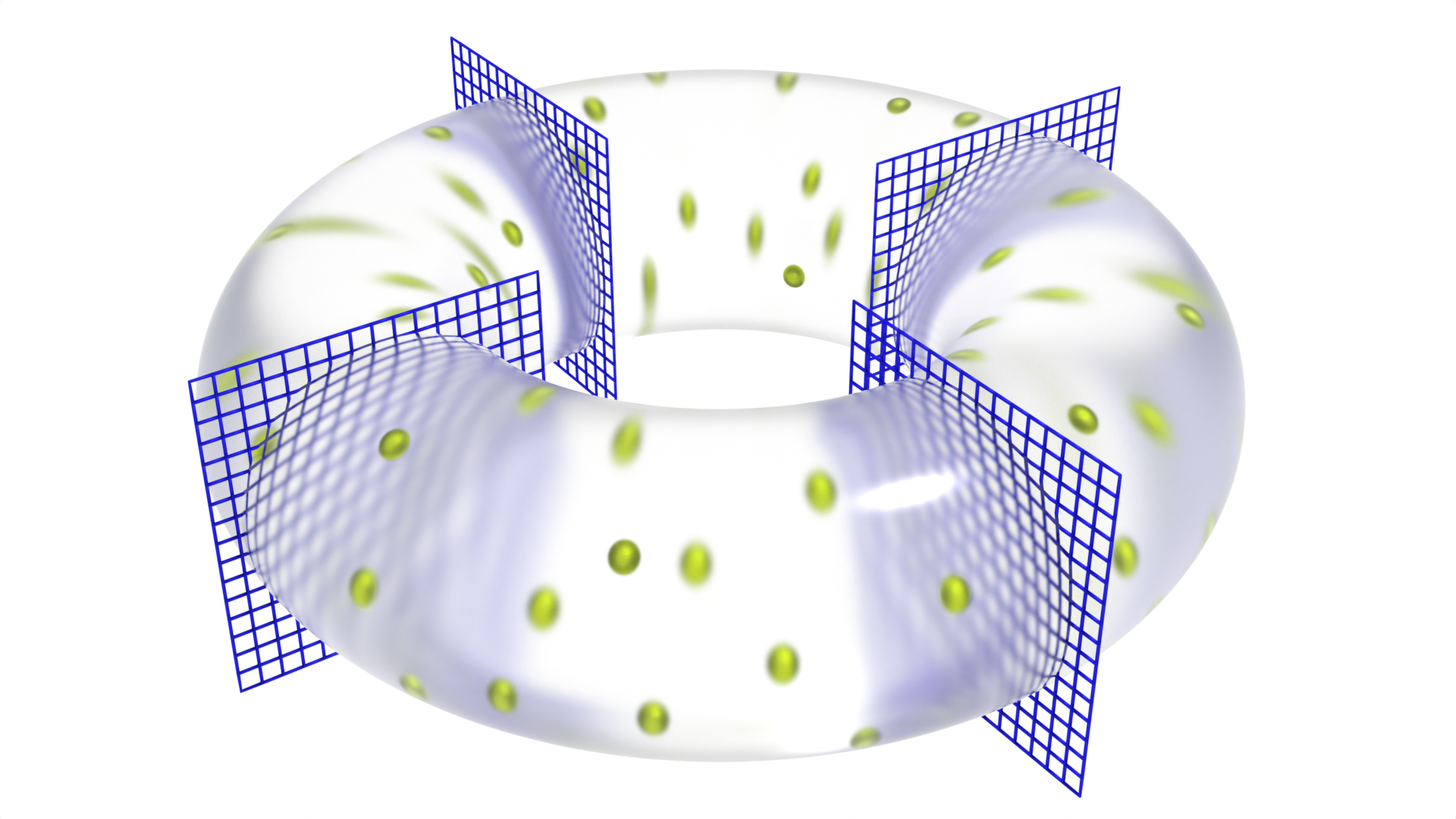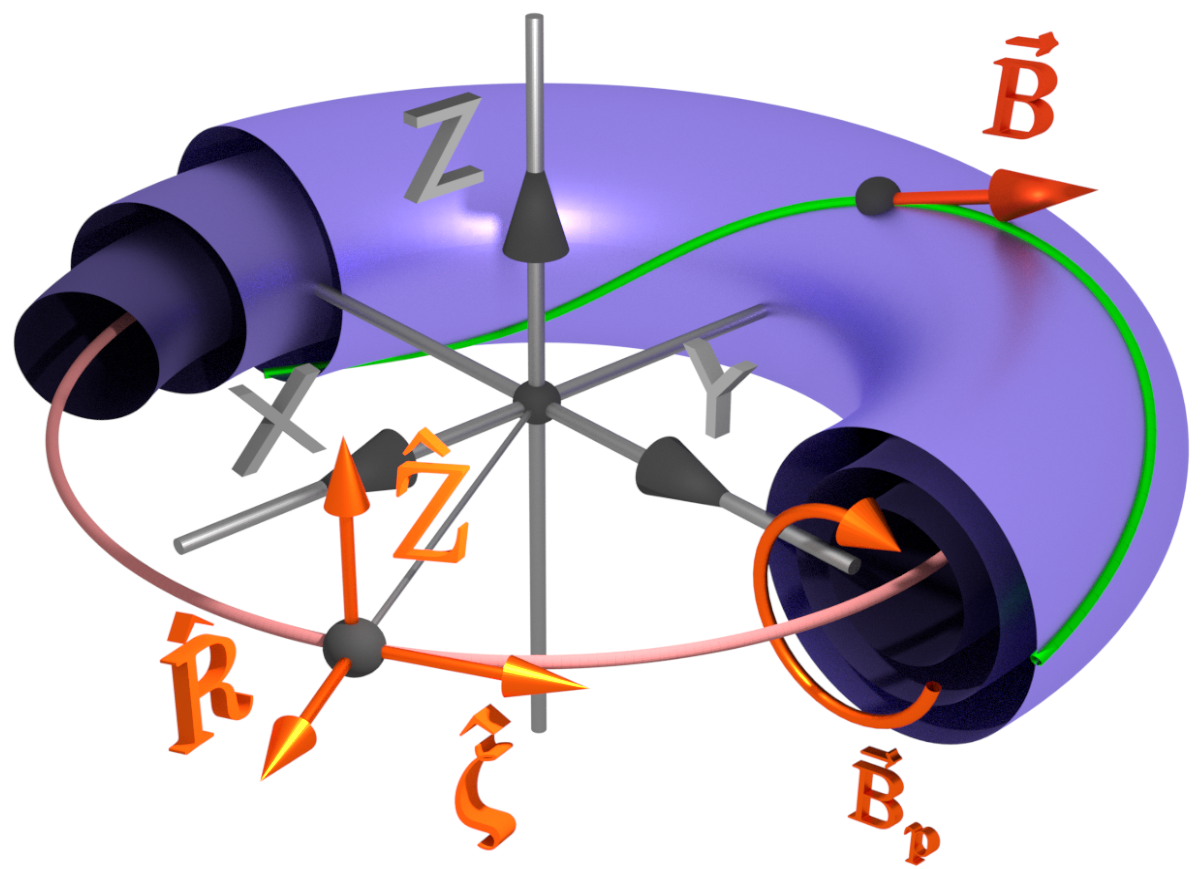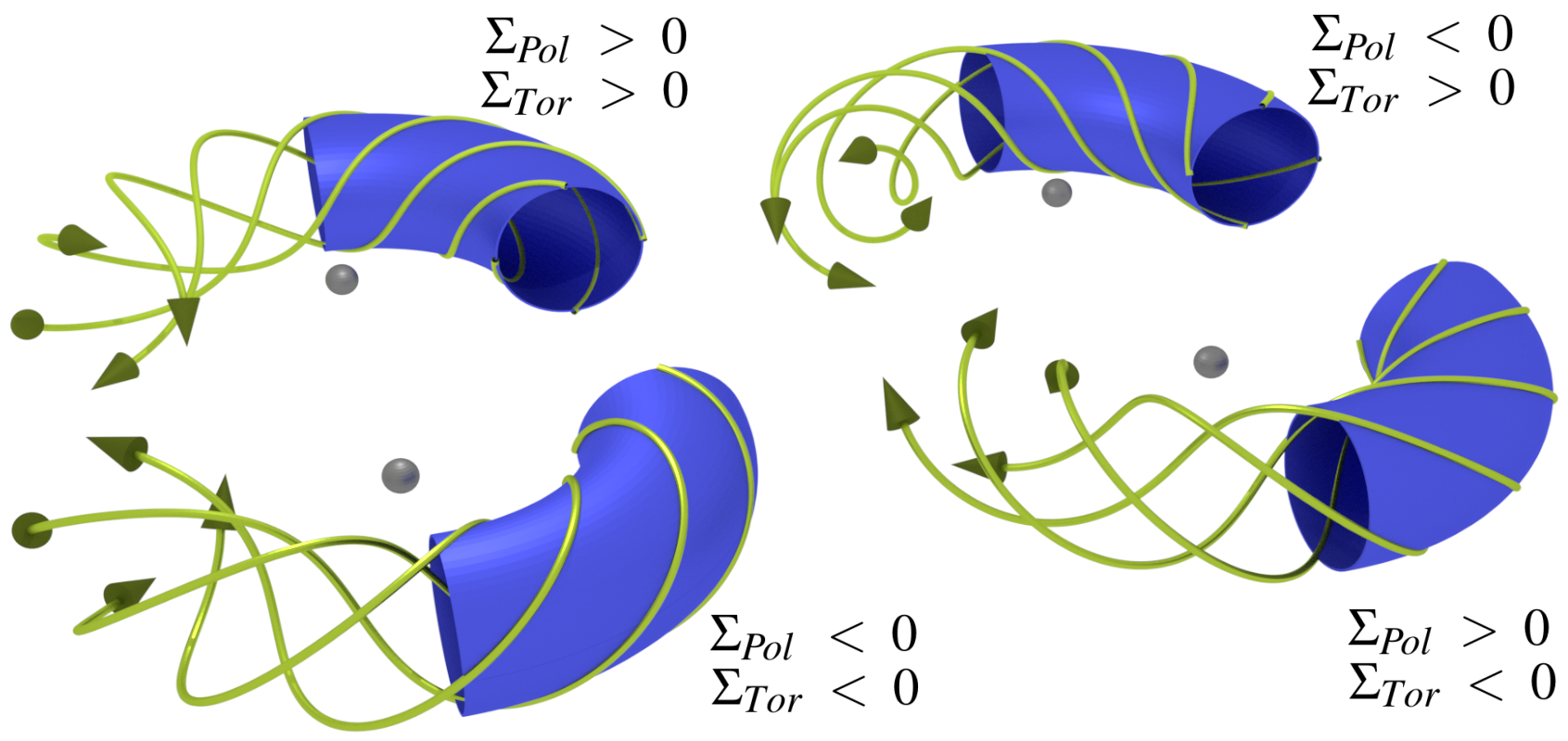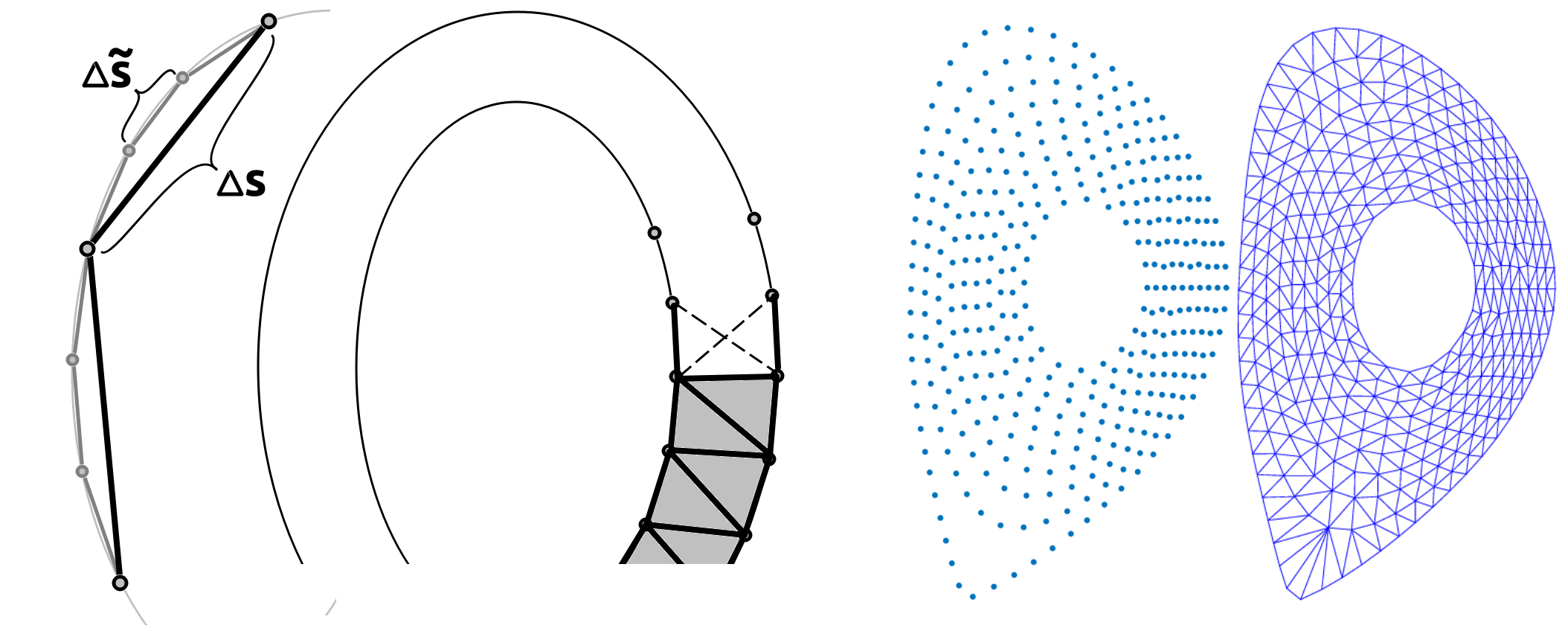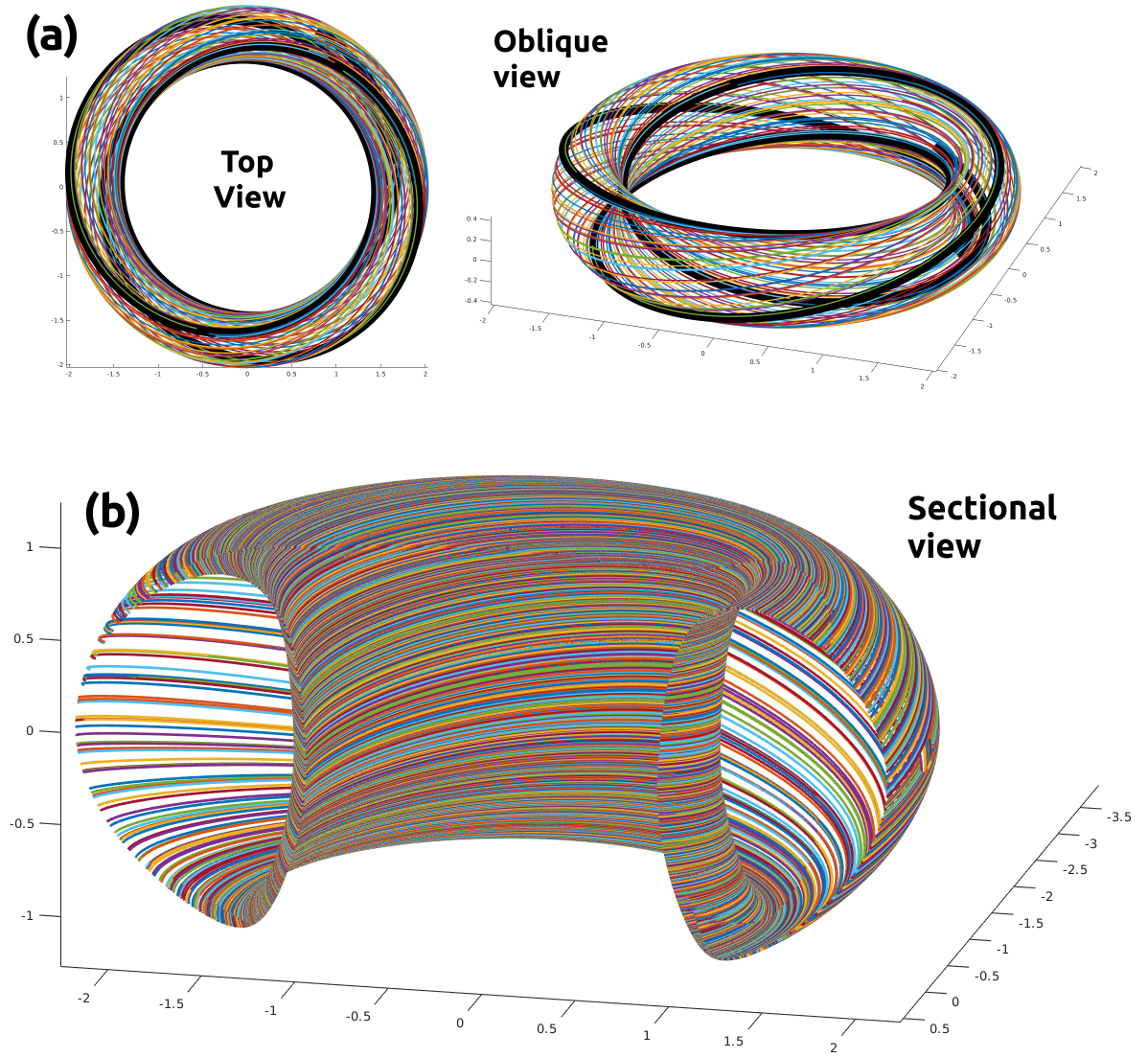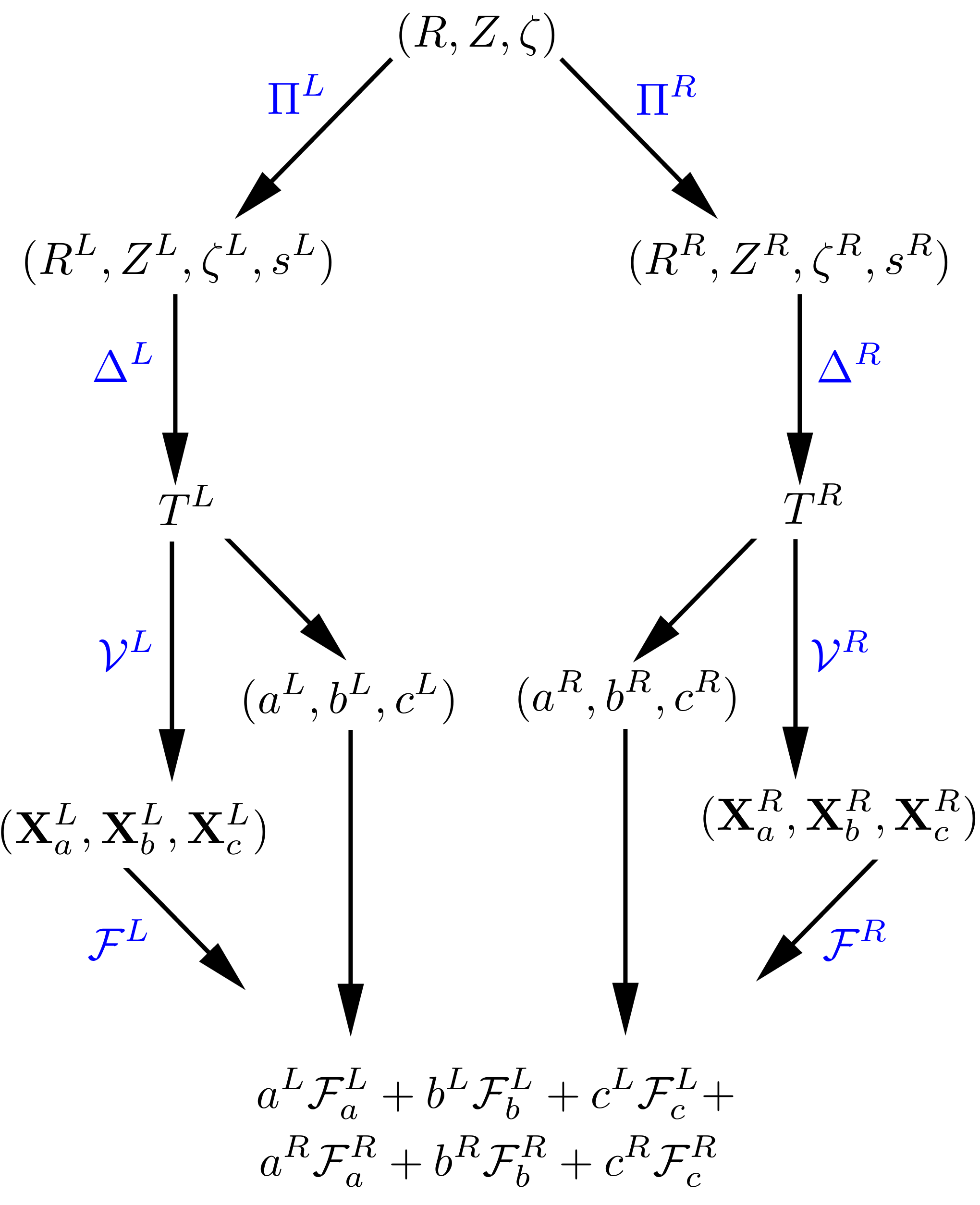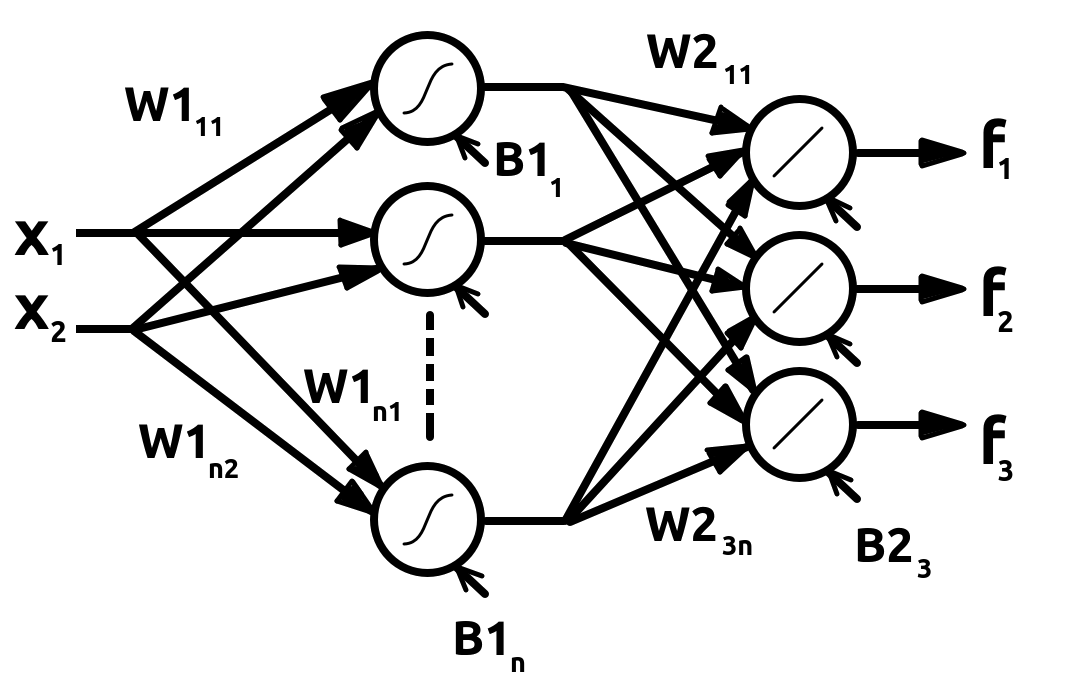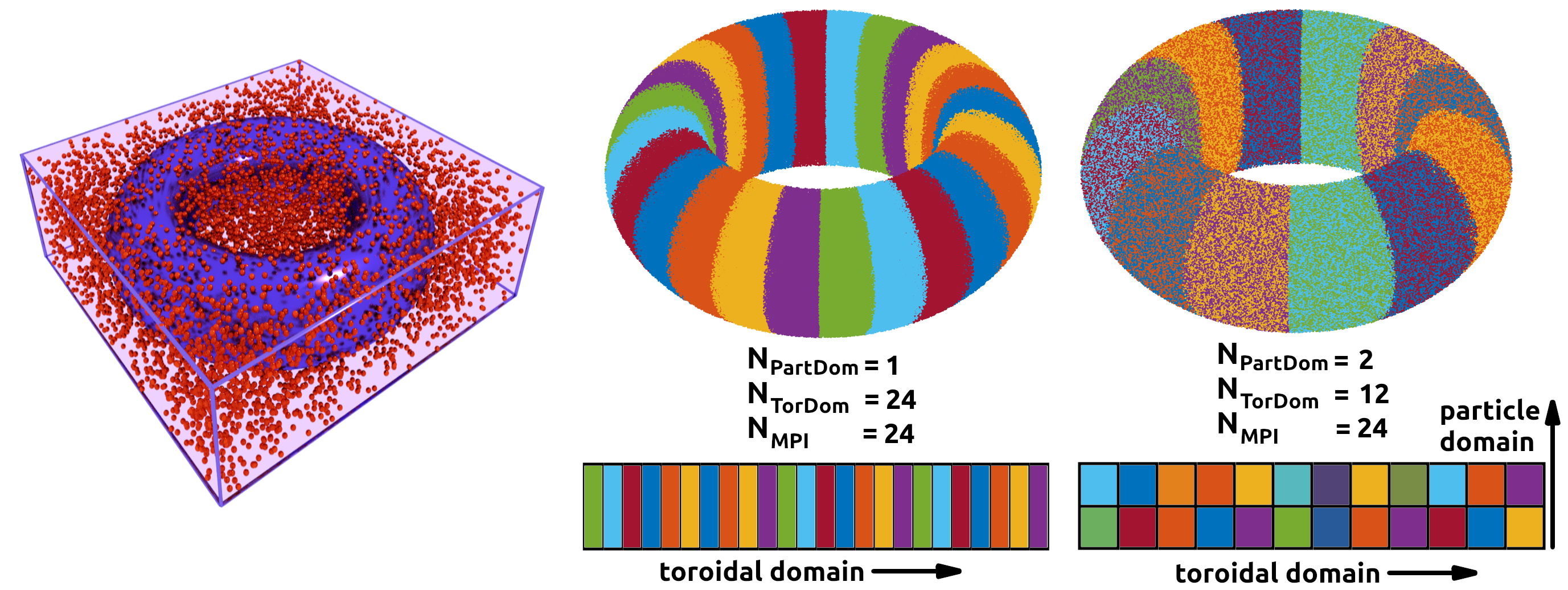Table of Contents
Main
Workflow:
- Read equilibrium data
- Normalize data
- Build mesh
- Build the gather-scatter operator
- Build the (gyro-averaged) Poisson solver
- Initialize particles
- Execute the PIC cycle
Input files
The input files are stored in the “dat/” folder.
- g2c3.in (Input parameters)
- g_file.in (EFIT equilibrium data)
- profile.in (Temperature and density profile data)
In G2C3, all the read operations are performed in read_data.F90
by the Master processing element (mpe==0). Then the
MPI_BCAST
subroutine in mpi.F90 broadcasts the values to
all the other processing elements. In case the read elements are
an array, first the array dimension is broadcast and then the
arrays are allocated in allocate_arrays.F90
G2C3 conventions
Normalization
The basic units and normalization used in G2C3 are summarized as follows:
Mass: proton mass, $m_p$Charge: proton charge, eMagnetic field: on axis, $B_a$Length: Tokamak major radius, $R_0$Density: on axis electron density, $n_{e0}$Temperature: on axis electron temperature, $T_{e0}$Time: Inverse on axis cyclotron frequency of proton, $\omega_p^{-1}=m_pc/eB_a$
COCOS sign convention
Build mesh
Locator
We use a neural network in a Universal function approximation mode to map $\mathcal{N}_\Delta:(R,Z) \rightarrow \Delta$, where $\Delta$ is the triangle that encloses the point. (Learn more)
Build the gather-scatter operator
Field lines (numerical integrator)
Integrator
Neural network
Build the (gyro-averaged) Poisson solver
PETSc
We use the PETSc library in the field solver to solve MPI and OpenMP-based sparse matrix operations, such as inverse and multiplication.
